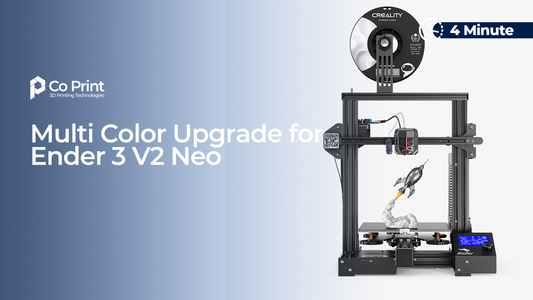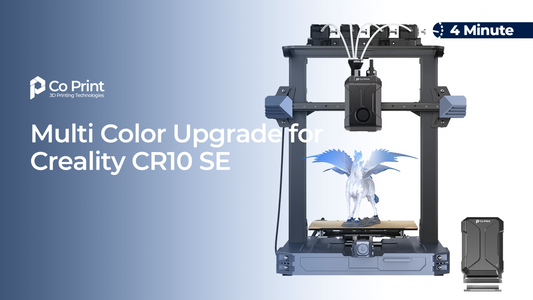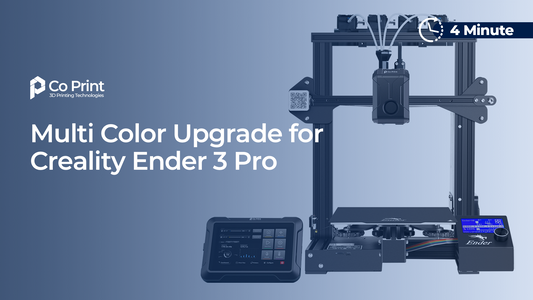Today, 3D printing accelerates engineering processes, providing significant advantages in prototyping, testing, and manufacturing stages. Especially, multicolor 3D printing technology not only improves aesthetics but also helps engineers make their designs clearer and more functional.
In the prototyping stage, printing different components at once in various colors allows engineers to analyze their designs more clearly and detect potential errors more quickly. With color coding, it becomes easy to understand how mechanical parts interact, and assembly processes become more efficient.
In the testing stage, multicolor prints allow engineers to examine factors such as durability, aerodynamic structure, and ergonomics in greater detail. By using different materials or hardness levels in a single model, the product’s performance under various conditions can be evaluated.
In the manufacturing stage, multicolor 3D printing simplifies assembly processes on the production line. For example, components with different functions in complex systems can be distinguished by colors, speeding up assembly and quality control. Additionally, engineers can provide the production team with clearer visuals and instructions using multicolor prints.
In this article, we will examine in detail how multicolor 3D printing has brought transformation to engineering and the advantages it offers from design processes to production, using examples printed with Co Print technology.
Use in Design and Prototyping Processes
Prototyping in engineering projects is a critical stage that allows ideas to be materialized and tested. While traditional methods can be time-consuming and costly, 3D printing technology accelerates this process and reduces costs. Multicolor 3D printing helps in clearer analysis of designs, separation of functional components, and earlier detection of potential errors.
For example, an airplane engine model with moving gears allows engineers to analyze complex mechanical systems. By printing different components of the engine in different colors, the functioning of the moving parts becomes more visible, and potential errors during assembly can be detected early.
Visual prototyping plays a crucial role in industrial product design. The prototype of the first version of Co Print is one example of this process. These types of prototypes, which are non-functional but provide the closest visual representation of the final design, allow for evaluation of the product in terms of form and user experience while enabling the identification of potential design issues before production. Thanks to multicolor 3D printing, engineers and designers can physically examine the product to optimize ergonomics, aesthetics, and assembly processes. In these prototypes, durable materials like ABS and PETG filaments can be used to create a realistic testing environment. ABS provides durability and heat resistance, while PETG offers flexibility and transparency, making it suitable for different design needs. The small prototypes of Co Print can also be used as eye-catching materials for promotional purposes.

Co Print’s Chroma Head and Chroma Pad modules are significant examples of the advantages that 3D printing offers in design and prototyping processes. During the initial prototyping stages, the mechanical structure and functionality of these modules were tested to evaluate their integration into the printing process, allowing for early detection of potential design flaws. Rapid iterations were performed using 3D printing to improve ergonomics, stability, and performance, preventing costly revisions. Today, their enhanced versions feature optimized designs and higher print quality, providing engineers and designers with a more stable and efficient experience.


ChromaHead prototype version and its current version.


ChromaPad prototype version and its current version.
In the automotive sector, the exhaust manifold prototype and brake disc model provide significant convenience for engineers in assembly and testing processes. The exhaust manifold is a critical component that requires testing, and with 3D printing, gas flow and stress points can be analyzed in detail. Similarly, the brake disc model can be used to assess assembly compatibility before production and to test the performance of the design. These types of prototypes allow engineers to identify potential design flaws early and make necessary improvements before moving into the production phase.


Baykar's unmanned aerial vehicle, the Kızılelma model, is a visual prototype. These types of visual prototypes are used to visualize the final design and make assessments about its appearance. While prototypes for aerial vehicles can be used in various areas, from aerodynamic testing to assembly simulations, visual prototypes allow for a better understanding of the design in terms of aesthetics and size.

Use in Testing and Analysis Processes
Multicolor 3D printing is a technology with great potential in engineering testing and analysis processes. In traditional testing, engineers typically rely on measurements to understand the performance of parts, but with 3D printing, this process becomes more visual and interactive. Especially in tests involving complex structures and high precision, multicolor 3D printing allows engineers to achieve more accurate results.
In tests of large and complex structures, such as wind turbines, multicolor 3D printing provides a significant advantage. Durability tests of these parts can be performed using different colors during printing to show stress and material distribution. For example, stress points in different sections of the wind turbine can be visualized through colors, allowing engineers to identify which areas of these components require more strength or durability.

Additionally, with multicolor 3D printing for durability tests, colors clearly visualize wear points, heating areas, and material stresses. These tests allow engineers to quickly identify potential weak spots, enabling them to develop safer and more efficient designs. For example, with a color-coded prototype showing which areas of an industrial part are more likely to break and how much force these points tend to withstand, engineers can make their designs safer and more durable.

Use in the Manufacturing and Assembly Process
Multicolor 3D printing provides a significant advantage by increasing efficiency in manufacturing and assembly processes. In particular, the visual differentiation process offered by multicolor 3D printing accelerates and optimizes the production of parts with high requirements for durability and functionality.
Multicolor 3D printing also offers important benefits in assembly processes. For example, in the production of a complex engine component, it is possible to visually distinguish the position and function of each part using multicolor 3D printing. Functional differences between parts become more evident through colors, minimizing potential errors in the assembly process. This is especially helpful in assembly lines where moving parts need to be placed correctly.
Another example is in the production of electronic components and circuit boards, where multicolor 3D printing makes the distinction between each connection point and component clearer. This helps identify assembly errors beforehand, shortening processing time. Additionally, each component's placement can be tested and simulated in advance, ensuring no time is wasted on the production line.
Products that can be created by combining flexible materials like carbon fiber with durable materials such as TPU can provide significant advantages in industrial manufacturing processes. These types of parts, especially in the automotive, aerospace, and robotics industries, offer durability and flexibility during assembly. Their flexible structure allows for compatibility with modular designs in the production process and can help reduce assembly errors. Additionally, they can be used to create customized test parts or prototypes, providing valuable insights into the performance of the products before moving to final production. These material combinations are creating new possibilities in industrial manufacturing.

In the automotive industry, multicolor 3D printing is used to enhance efficiency in production and assembly processes. For example, a printed car part has been utilized to test assembly compatibility before production and to identify potential design flaws at an early stage. Such prototypes help engineers evaluate how the part interacts with other components, allowing them to detect and resolve possible assembly issues before moving into the manufacturing phase.

Multicolor 3D printing is rapidly evolving as a technology that brings significant innovations to engineering processes. By providing advantages in design, prototyping, testing, and manufacturing, engineers can produce solutions more quickly, efficiently, and effectively. Multicolor printing not only improves visualization but also enhances functionality, refining the design process. Co Print utilizes this evolving technology, enabling engineers to better visualize and test complex designs. In the future, multicolor 3D printing is expected to become faster, more cost-effective, and integrated into more industries. This technology will continue to transform engineering disciplines and expand into more fields as time progresses .




